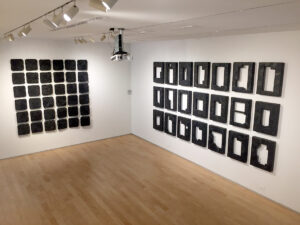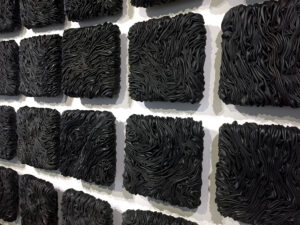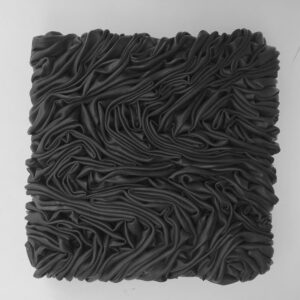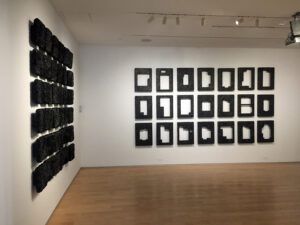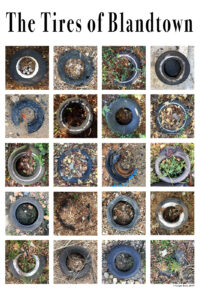Gallery 72, Atlanta, GA, October 10 – November 27, 2019

This exhibition focuses on the demise and resettlement of the residential core of the westside Atlanta neighborhood of Blandtown, its history, recent rapid transformation, and its derided and consequently underutilized name. On the Reclaim side of the exhibition space, there are three separate but related installations: 1) Rugae, derived from a topographic map of the area; 2) Trace, depicting the building footprints of the 21 homes that existed in Blandtown in 2003 (only 4 of the over 200 original homes remain today); and 3) Retrace, referencing the new residential construction that has occurred since 2016. Add to that a collection of printed articles on Blandtown, most of which are from the Atlanta Constitution. Coincidentally, this building formerly housed the Atlanta Journal Constitution. On the Proclaim side of the gallery, I embrace the area’s proper name by subverting “Blandtown” into photographs of existing commercial signage (Brandtown); prompt deliberate questions, provide loaded comments, and simply play with words through an agitprop series (Red, White, and Black); and deliver some merchandise for the public’s proclamation beyond these gallery walls (Blandtown! Merch).
For the full list of exhibition artwork, view checklist here.
RECLAIM BLANDTOWN
Prior to purchasing my studio in 2003, I only had a tangential connection to the neighborhood: my paternal grandfather, worked at White Provision Company, a meatpacking facility located on the edge of Blandtown. Much has changed in the 16 years since I bought the 1000 square foot cinderblock structure that Johnny Lee Green built in the late 1940’s. Originally an African American community comprised of two to three hundred homes, the neighborhood was strategically forced into decline through rezoning into an industrial district in the mid-twentieth century. In the 2010’s much of the area was rezoned back to residential under a developer rebranding the neighborhood as West Town. I present Blandtown as a case study for current development issues relating to the greater city: legacy housing, gentrification, and issues resulting from residential development in the proximity of industry.

